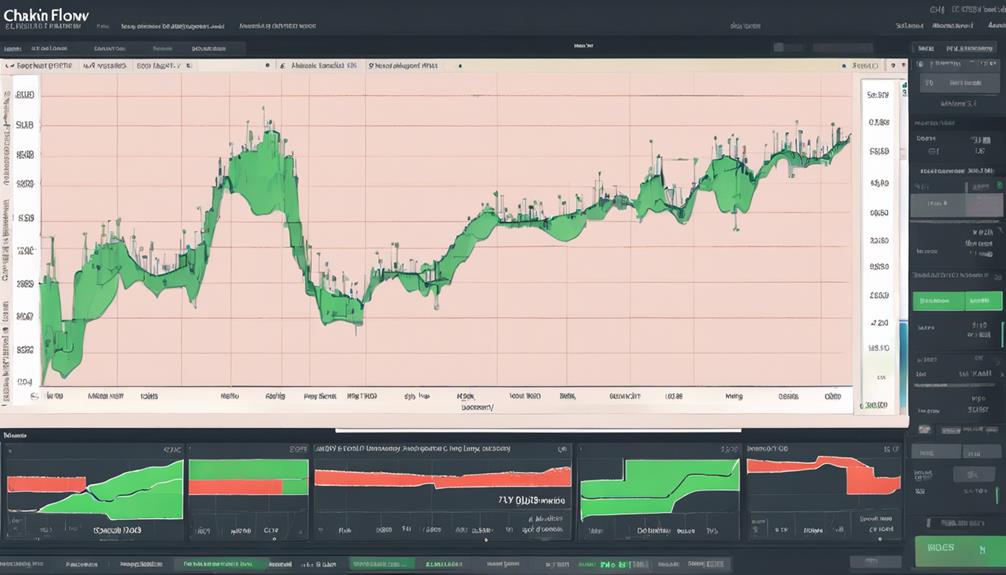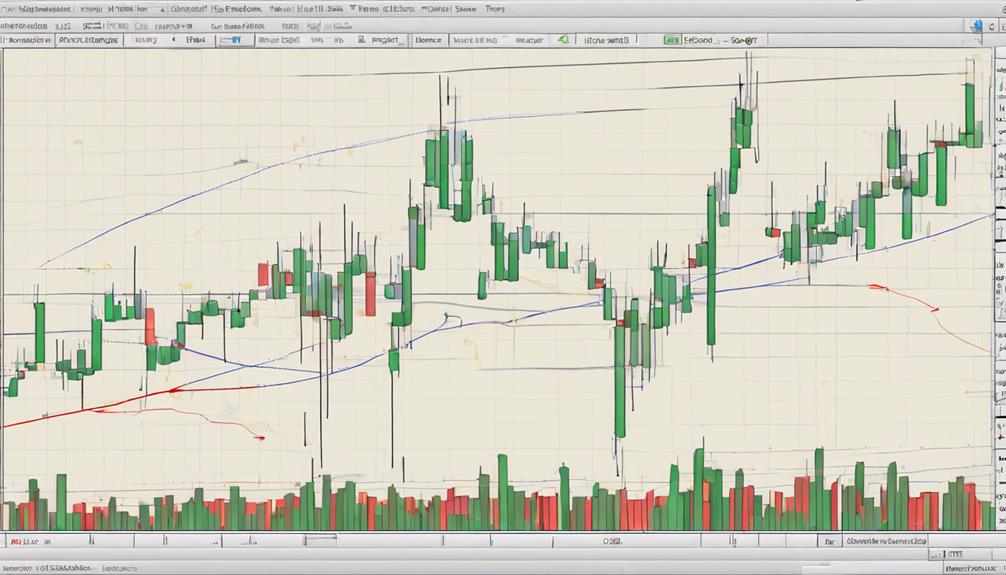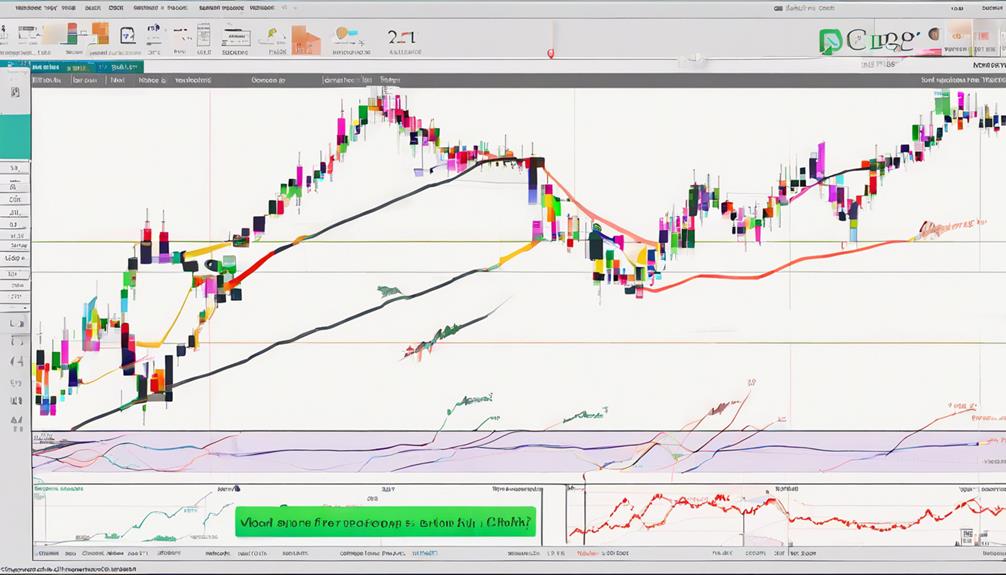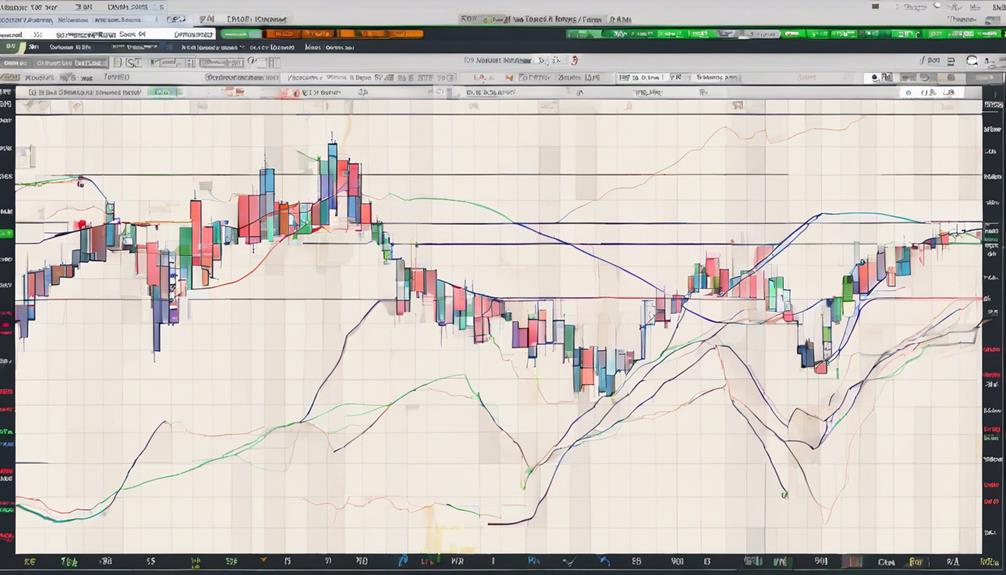Mastering the nuances of Chaikin Money Flow (CMF) indicator settings is a pivotal aspect of refining trading strategies. The choice of period value significantly impacts the indicator's effectiveness in gauging market sentiment.
While the 21-period setting is widely favored for daily timeframes, the quest for the ideal configuration does not end there. Delving into the intricate details of fine-tuning CMF parameters can unlock hidden insights that might elevate one's trading prowess to new heights.
The journey towards perfecting CMF indicator settings holds the promise of uncovering a realm of untapped potential, offering traders a competitive edge in navigating the complexities of financial markets.
Chaikin Money Flow Indicator Basics
The fundamental concept underlying the Chaikin Money Flow indicator lies in its ability to assess the flow of capital within a given stock by analyzing price movements in conjunction with trading volume. Developed by Marc Chaikin, this indicator focuses on measuring the accumulation and distribution of a stock based on the relationship between closing prices and the high-low range.
By incorporating both volume and price data, the CMF indicator provides insights into the buying and selling pressure in the market. Customizable settings further enhance its utility, allowing traders to adapt the indicator to different trading strategies and preferences.
Typically calculated over a standard period of 21 periods for optimal analysis, understanding the basics of the Chaikin Money Flow indicator is crucial for interpreting trends accurately and making well-informed trading decisions. By mastering these foundational aspects, traders can leverage the CMF indicator effectively to navigate the dynamics of the market with confidence and precision.
Optimizing Indicator Parameters

Analyzing different period values for the Chaikin Money Flow indicator can enhance its functionality and effectiveness when optimizing indicator parameters. The optimal period value for daily timeframes is commonly set at 21 periods, aligning with the number of trading days in a month.
Backtesting with various period values on lower timeframes can provide insights into the indicator's behavior and efficiency. Adjusting the period setting influences the sensitivity of the indicator, with values over 30 reducing sensitivity and settings below 20 increasing it.
Setting the period at 21 periods is recommended for capturing significant trends and signals in financial markets. This parameter is widely used due to its balance and relevance to monthly trading cycles.
Utilizing Zero Line Crosses

Utilizing zero line crosses in the Chaikin Money Flow indicator serves as a pivotal technique for discerning shifts between accumulation and distribution phases in financial markets. Traders rely on these crosses to gauge buying and selling pressure, identifying potential trend changes and determining entry and exit points efficiently.
Here's why zero line crosses are crucial:
- Clear Signal of Market Direction: When the CMF line crosses above the zero line, it indicates strong buying pressure, suggesting a potential uptrend or bullish market sentiment. Conversely, crossing below the zero line signifies increased selling pressure, hinting at a possible downtrend or bearish market outlook.
- Confirmation of Trend Changes: Zero line crosses not only provide insights into current market dynamics but also help confirm trend changes. Traders use these crosses as signals to validate shifts in market sentiment and adjust their strategies accordingly.
- Efficient Entry and Exit Points: By interpreting zero line crosses accurately, traders can strategically plan entry and exit points for their trades, maximizing profit potential and minimizing risks associated with market fluctuations.
Exploring Trend Line Strategies

Exploring the application of trend line strategies enhances the interpretative capacity of traders utilizing the Chaikin Money Flow indicator. By drawing trend lines on the CMF indicator, traders can better identify trends, buying pressure, and selling pressure in the market. These trend lines help confirm the direction of the CMF indicator, providing valuable insights for making informed trading decisions.
Utilizing trend line strategies with the CMF indicator can improve the accuracy of trade signals and highlight potential reversals. Moreover, spotting trend line breakouts on the CMF indicator can serve as a signal for shifts in market sentiment, offering traders new trading opportunities.
Leveraging Divergence for Trading

How can traders effectively leverage divergence in the Chaikin Money Flow indicator for informed trading decisions? Divergence in CMF occurs when the price and indicator move in opposite directions, providing valuable insights into potential trend reversals. To maximize the utility of this phenomenon in trading strategies, traders can consider the following:
- Utilize Price Action: Analyzing price movements alongside CMF divergence can offer comprehensive insights into market dynamics and potential trading opportunities.
- Confirm Divergence Signals: Validating CMF divergence signals with other technical indicators can enhance the accuracy of trading decisions and provide added confidence in the identified trends.
- Adapt Trading Strategy: Adjusting trading strategies based on the presence of bullish or bearish divergence in CMF can help traders align their positions with the prevailing market sentiment and improve overall trading outcomes.
What Are the Best Settings for Using the Chaikin Money Flow Indicator in Stock Trading?
When using the Chaikin Money Flow Indicator in stock trading, the best settings will depend on the time frame and the specific assets being traded. It is recommended to experiment with different settings on a demo account to find the optimal configuration for the chaikin money flow trading indicator.
Frequently Asked Questions
What Is the Best Setting for Chaikin Money Flow?
The best setting for the Chaikin Money Flow indicator is often considered to be the default 21-period setting. This choice strikes a balance between sensitivity and smoothness in generating signals, making it a suitable starting point for most traders.
What Is the Best Money Flow Index Setting?
The optimal setting for the Money Flow Index (MFI) varies based on trading goals and timeframes. Generally, a 14-period MFI is commonly used for standard settings, offering a balance between sensitivity and reliability. Adjustments can be made for specific strategies.
Is Chaikin Money Flow a Good Indicator?
Chaikin Money Flow is a valuable indicator for assessing market sentiment and trend strength. By analyzing buying and selling pressure through volume and price data, CMF helps traders make informed decisions. Its effectiveness is further enhanced when used in conjunction with other indicators.
What Is the Formula for the Chaikin Money Flow Indicator?
The Chaikin Money Flow (CMF) indicator formula calculates by summing Money Flow Volume over a selected period and dividing by total volume. It involves the Money Flow Multiplier, derived from price range and volume, crucial in assessing market strength.
Conclusion
In conclusion, mastering the settings of the Chaikin Money Flow indicator is essential for successful trading strategies. By optimizing parameters, utilizing zero line crosses, exploring trend line strategies, and leveraging divergence, traders can enhance their ability to identify market trends and make informed decisions.
The Chaikin Money Flow indicator serves as a valuable tool in understanding market accumulation and distribution dynamics, providing a solid foundation for profitable trading endeavors.
